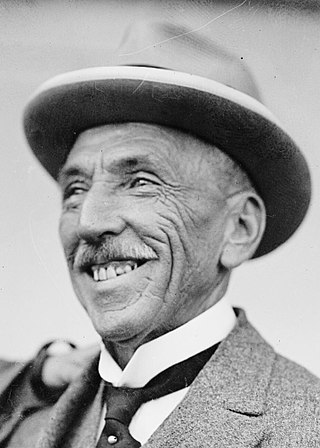
William Morris Hughes was an Australian politician who served as the seventh prime minister of Australia from 1915 to 1923. He led the country during World War I, and his influence on national politics spanned several decades. He was a member of the federal parliament from Federation in 1901 until his death in 1952, and is the only person to have served for more than 50 years. He represented six political parties during his career, leading five, outlasting four, and being expelled from three.

Altona is a suburb in Melbourne, Victoria, Australia, 13 km (8.1 mi) south-west of Melbourne's Central Business District, located within the City of Hobsons Bay local government area. Altona recorded a population of 11,490 at the 2021 census.

The City of Kwinana is a local government area of Western Australia. It covers an area of approximately 118 square kilometres in metropolitan Perth, and lies about 38 km south of the Perth central business district, via the Kwinana Freeway. Kwinana maintains 287 km of roads and had a population of almost 39,000 as at the 2016 Census.
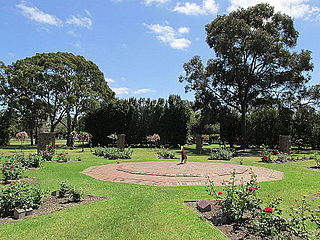
Altona North is a suburb in Melbourne, Victoria, Australia, 10 km (6.2 mi) south-west of Melbourne's Central Business District, located within the City of Hobsons Bay local government area. Altona North recorded a population of 12,962 at the 2021 census.
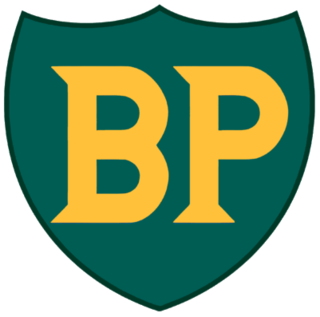
BP Canada was a Canadian petroleum company and subsidiary of British Petroleum that existed between 1955 and 1992. The name refers to a group of companies that engaged in various segments of the petroleum industry lifecycle. BP entered the Canadian market in October 1953, when it purchased a 23 percent stake in the Triad Oil Company. In 1955, BP formed a Canadian subsidiary, based in Montreal, called BP Canada Limited. The company began acquiring retail stations in Ontario and Quebec and in 1957 started construction on a refinery in Montreal. By the end of the 1950s BP Canada was a fully-integrated operation. In 1964, it acquired from Cities Service the Oakville Refinery, and then expanded its operations significantly in 1971 when it acquired Supertest Petroleum.

Llandarcy is a village near Neath in the Neath Port Talbot county borough, Wales, and was the site of the first oil refinery in the United Kingdom. It was originally designed as a garden village to house the workers for the BP refinery built between 1918 and 1922. The village is near junction 43 of the M4 motorway.

The Llandarcy Oil Refinery, also known as the National Oil Refinery, BP Llandarcy and Skewen refinery, was the United Kingdom's first oil refinery, initially opened by the Anglo-Persian Oil Company on 29 June 1922, although operations had begun on 1 July 1921. Before this, the only oil refined in the UK came from Scottish shale.

Grangemouth Refinery is an oil refinery complex located on the Firth of Forth in Grangemouth, Scotland, currently operated by Petroineos.

The BPRefinery (Kent) was an oil refinery on the Isle of Grain in Kent. It was commissioned in 1953 and had a maximum processing capacity of 11 million tonnes of crude oil per year. It was decommissioned in August 1982.

BP p.l.c. is a British multinational oil and gas company headquartered in London, England. It is one of the oil and gas "supermajors" and one of the world's largest companies measured by revenues and profits. It is a vertically integrated company operating in all areas of the oil and gas industry, including exploration and extraction, refining, distribution and marketing, power generation, and trading.

The petroleum industry in Western Australia is the largest contributor to the country's petroleum exports. Western Australia's North West Shelf (NWS) is the primary location from which production originates. Oil exports are shipped from Port Hedland.

The Kwinana Oil Refinery was sited on the shore of Cockburn Sound at the suburb of Kwinana Beach, near Fremantle, Western Australia. Built by the Anglo-Iranian Oil Company and completed in 1955, it was the largest oil refinery in Australia, with a capacity of 21.9 million litres per day (138,000 bbl/d). It was closed by BP in March 2021 to be converted to an import-only terminal.
Laurence Frederic Fitzhardinge was an Australian historian and librarian. He was known as a pioneer of the Australian Dictionary of Biography, and also as the official biographer of Billy Hughes.
The Commonwealth Line was a shipping company owned and operated by the Australian federal government between 1916 and 1928. It was officially known as the Commonwealth Government Line of Steamers until 1923, and thereafter as the Australian Commonwealth Line of Steamers.
Commonwealth Oil Corporation Limited was a British-owned Australian company associated with the production and refining of petroleum products derived from oil shale, during the early years of the 20th century. It is associated with Newnes, Hartley Vale, and Torbane, all in New South Wales. It should not be confused with Commonwealth Oil Refineries, which was a completely separate company, established in 1920, that refined imported crude oil from 1924.
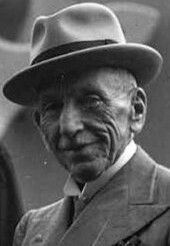
The United Australia Party (UAP) held a leadership election on 9 October 1941, following the resignation of Robert Menzies on the same day. Billy Hughes was elected as his replacement.

The Fremantle Outer Harbour is the part of Fremantle Harbour located in the Cockburn Sound, at the City of Kwinana, Western Australia. Fremantle Harbour consists of the Inner Harbour, which is situated on the mouth of the Swan River; and the Outer Harbour, which is 20 kilometres (12 mi) to the south. It is managed by the Fremantle Port Authority.

John Wilson Fell (1862–1955) was an industrialist involved in the shale oil operations at Newnes, New South Wales and the establishment of two early oil refineries, on Gore Bay at Greenwich and at Clyde, both suburbs of Sydney. He was the principal of John Fell & Company and was, for many years, the Managing Director of Commonwealth Oil Corporation, which he revived from receivership.
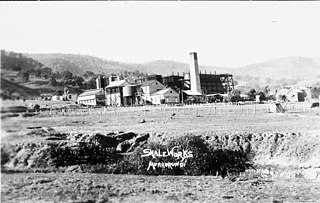
The British Australian Oil Company Limited was a British-owned company—incorporated in 1910—that mined oil shale and produced shale oil and refined oil products, in New South Wales, Australia, during the years from 1911 to 1915.
Australia is a major petroleum producer and importer, with a number of petroleum companies involved in upstream and downstream operations. Western Australia is the largest contributor to Australia's production of most petroleum products.
















